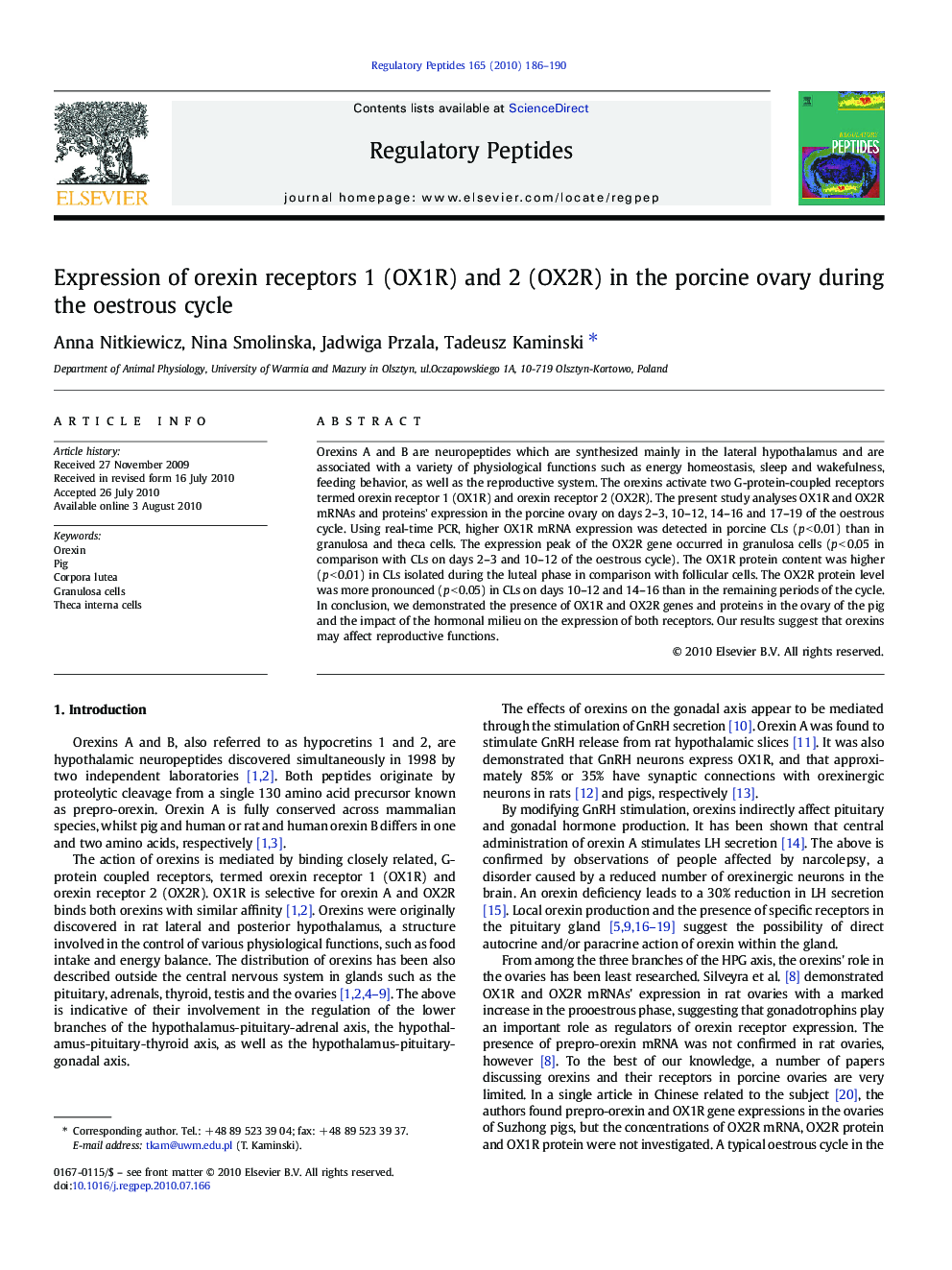| Article ID | Journal | Published Year | Pages | File Type |
|---|---|---|---|---|
| 2022675 | Regulatory Peptides | 2010 | 5 Pages |
Orexins A and B are neuropeptides which are synthesized mainly in the lateral hypothalamus and are associated with a variety of physiological functions such as energy homeostasis, sleep and wakefulness, feeding behavior, as well as the reproductive system. The orexins activate two G-protein-coupled receptors termed orexin receptor 1 (OX1R) and orexin receptor 2 (OX2R). The present study analyses OX1R and OX2R mRNAs and proteins' expression in the porcine ovary on days 2–3, 10–12, 14–16 and 17–19 of the oestrous cycle. Using real-time PCR, higher OX1R mRNA expression was detected in porcine CLs (p < 0.01) than in granulosa and theca cells. The expression peak of the OX2R gene occurred in granulosa cells (p < 0.05 in comparison with CLs on days 2–3 and 10–12 of the oestrous cycle). The OX1R protein content was higher (p < 0.01) in CLs isolated during the luteal phase in comparison with follicular cells. The OX2R protein level was more pronounced (p < 0.05) in CLs on days 10–12 and 14–16 than in the remaining periods of the cycle. In conclusion, we demonstrated the presence of OX1R and OX2R genes and proteins in the ovary of the pig and the impact of the hormonal milieu on the expression of both receptors. Our results suggest that orexins may affect reproductive functions.
Research Highlights►OX1R and OX2R genes and proteins are present in the porcine ovary. ►The expression of genes and proteins differs subject to the phase of the cycle. ►Diversified expression of receptors is associated with the animals' hormonal status. ►Orexins may affect reproductive functions.
